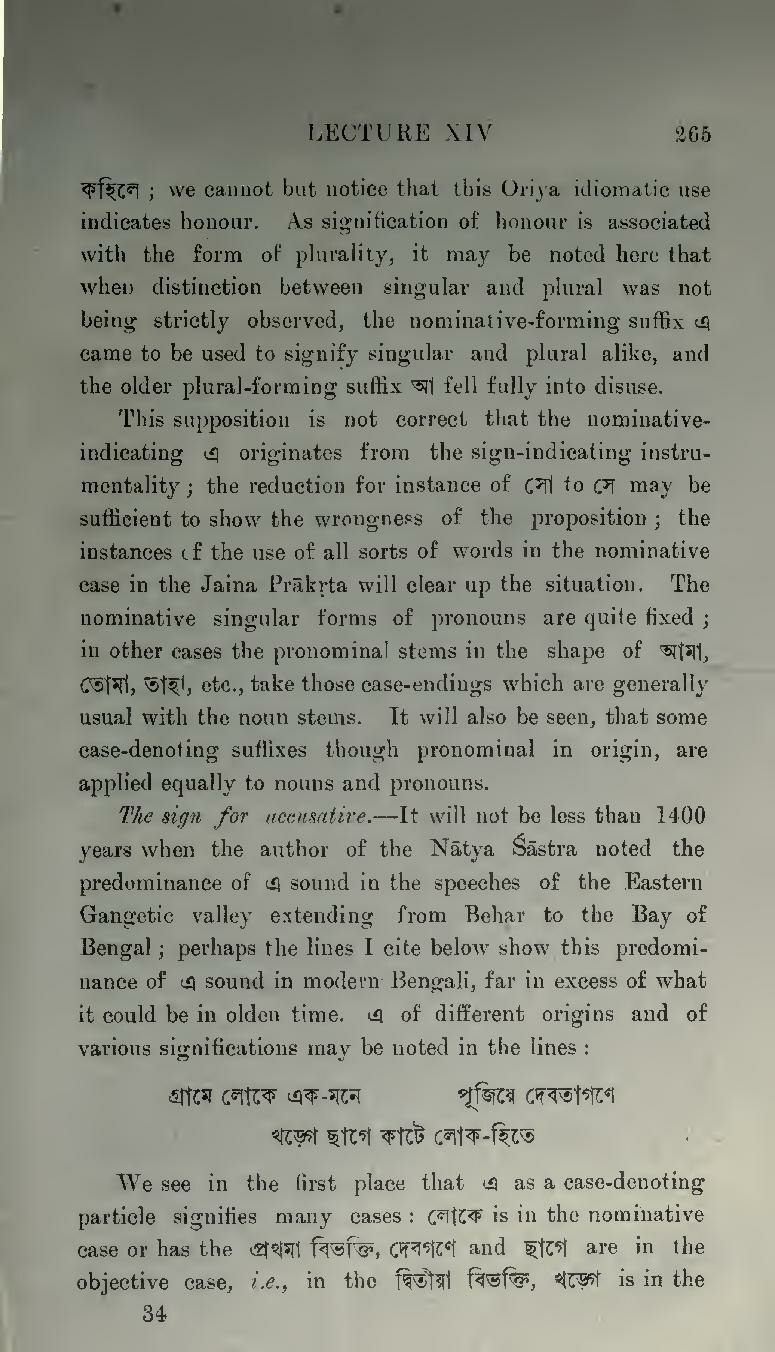কহিলে; we cannot but notice that this Oriya idiomatic use indicates honour. As signification of honour is associated with the form of plurality, it may be noted here that when distinction between singular and plural was not being strictly observed, the nominative-forming suffix এ came to be used to signify singular and plural alike, and the older plural-forming suffix আ fell fully into disuse.
This supposition is not correct that the nominative-indicating এ originates from the sign-indicating instrumentality; the reduction for instance of সো to সে may be sufficient to show the wrongness of the proposition; the instances of the use of all sorts of words in the nominative case in the Jaina Prākṛta will clear up the situation. The nominative singular forms of pronouns are quite fixed; in other cases the pronominal stems in the shape of আমা, তোমা, তাহা, etc., take those case-endings which are generally usual with the noun stems. It will also be seen, that some case-denoting suffixes though pronominal in origin, are applied equally to nouns and pronouns.
The sign for accusative.—It will not be less than 1400 years when the author of the Nātya Śāstra noted the predominance of এ sound in the speeches of the Eastern Gangetic valley extending from Behar to the Bay of Bengal; perhaps the lines I cite below show this predominance of এ sound in modern- Bengali, far in excess of what it could be in olden time. এ of different origins and of various significations may be noted in the lines:
গ্রামে লোকে এক-মনেপূজিয়ে দেবতাগণে
খড়্গে ছাগে কাটে লোক-হিতে
We see in the first place that এ as a case-denoting particle signifies many cases: লোকে is in the nominative case or has the প্রথমা বিভক্তি, দেবগণে and ছাগে are in the objective case, i.e., in the দ্বিতীয়া বিভক্তি, খড়্গে is in the
